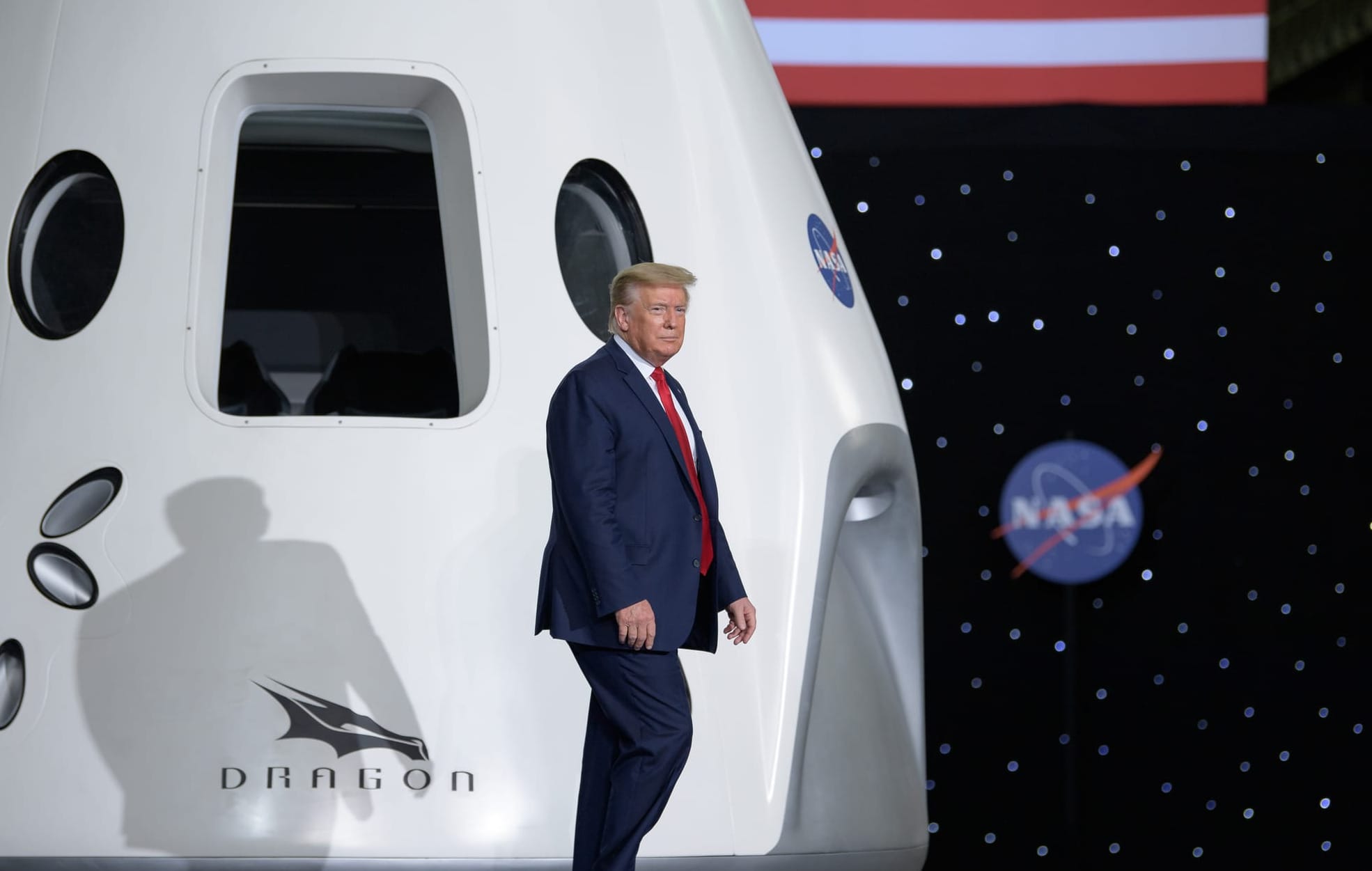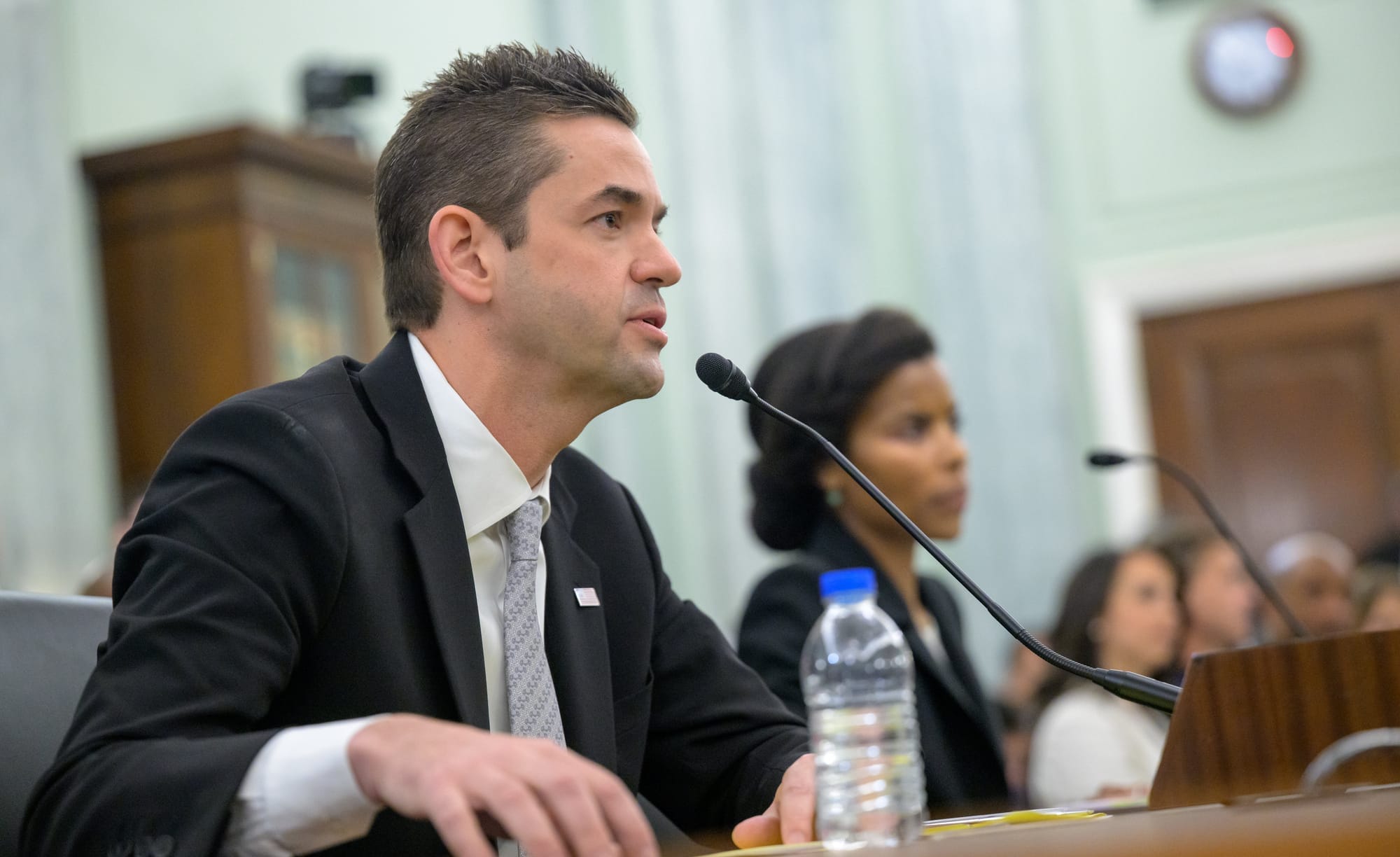Table of Contents
While NASA has been preparing for a half dozen Artemis missions to the Moon, the Trump Administration has spent its first few months back in the White House planning ways to end the program. Today, on National Space Day, the administration released an overview of its fiscal year 2026 budget, and it slashes billions from NASA and kills the Artemis program.
The proposed cuts to NASA total six billion United States Dollars. Reducing the budget from 24.8 billion to 18.8 billion, a drop of 24.3 percent. The cuts across the agency are as follows, along with the administration's reasoning:
Space Science: 2,265 million dollars in budget reduction. Reasoning: In line with the Administration’s objectives of returning to the Moon before China and putting a man on Mars, the Budget would reduce lower priority research and terminate unaffordable missions such as the Mars Sample Return mission that is grossly overbudget and whose goals would be achieved by human missions to Mars. The mission is not scheduled to return samples until the 2030s.
Mission Support: 1,134 million dollars in budget reduction. Reasoning: The Budget refocuses NASA on beating China back to the Moon and putting the first human on Mars. To achieve these objectives, it would streamline the workforce, IT services, NASA Center operations, facility maintenance, and construction and environmental compliance activities.
Earth Science: 1,161 million dollars in budget reduction. Reasoning: The Budget eliminates funding for low-priority climate monitoring satellites and restructures the gold-plated, two-billion-dollar Landsat Next mission while NASA studies more affordable ways to maintain the continuity of Landsat imagery, which is used by natural resource managers, States, and industry.
Legacy Human Exploration Systems: 879 million dollars in budget reduction. Reasoning: The Budget phases out the grossly expensive and delayed Space Launch System (SLS) rocket and Orion capsule after three flights. SLS alone costs $4 billion per launch and is 140 percent over budget. The Budget funds a program to replace SLS and Orion flights to the Moon with more cost-effective commercial systems that would support more ambitious subsequent lunar missions. The Budget also proposes to terminate the Gateway, a small lunar space station in development with international partners, which would have been used to support future SLS and Orion missions.
Space Technology: 531 million dollars in budget reduction. Reasoning: The Budget reduces Space Technology by approximately half, including eliminating failing space propulsion projects. The reductions also scale back or eliminate technology projects that are not needed by NASA or are better suited to private sector research and development.
International Space Station: 508 million dollars in budget reduction. Reasoning: The Budget reflects the upcoming transition to a more cost-effective commercial approach to human activities in space as the space station approaches the end of its life cycle. The Budget reduces the space station’s crew size and onboard research, preparing for a safe decommissioning of the station by 2030 and replacement by commercial space stations. Crew and cargo flights to the station would be significantly reduced. The station’s reduced research capacity would be focused on efforts critical to the Moon and Mars exploration programs.
Aeronautics: 346 million dollars in budget reduction. Reasoning: The Budget eliminates climate-focused “green aviation” spending while protecting the development of technologies with air traffic control and defense applications, producing savings.
Office of Science, Technology, Engineering, and Mathematics (STEM) Engagment: 143 million dollars in budget reduction. Reasoning: NASA’s primary role is space exploration and, similar to prior generations that were inspired by the Apollo lunar landings, NASA will inspire the next generation of explorers through exciting, ambitious space missions, not through subsidizing woke STEM programming and research that prioritizes some groups of students over others and have had minimal impact on the aerospace workforce.
With the billions in cuts, the administration did provide an increase in one program's funding:
Human Space Exploration: 647 million dollar budget increase. Reasoning: By allocating over $7 billion for lunar exploration and introducing $1 billion in new investments for Mars-focused programs, the Budget ensures that America’s human space exploration efforts remain unparalleled, innovative, and efficient.
In short, the budget changes would cripple NASA science in the long term, cancel the long await Mars Sample Return mission, put the International Space Station in jeaporady, majorly descope the DRACO nuclear propulsion demonstration mission*, and cancel the Space Launch System (SLS) rocket and Orion spacecraft after the Artemis III mission in 2027. Somehow, with all the cuts, a pivot to crewed Mars missions would be facilitated.
Eliminating SLS and the Orion capsule following Artemis III removes the only proven systems for sending humans beyond low Earth orbit. No commercial launch vehicle or spacecraft can currently fill this role. This poses a serious risk to long-term goals, as America's capacity for sustained human presence in deep space before Mars missions would no longer exist. It also makes the Artemis program a flags-and-footprints program, like Apollo, instead of regular long-term missions to the Moon.
Cuts to Earth Science, the International Space Station, and STEM outreach is a retreat from NASA's broader mission. Reducing Earth science budgets eliminates satellites vital to climate monitoring, and underfunding the aging as well as increasingly risky International Space Station could create a gap in low Earth orbit U.S. missions. Eliminating STEM engagement programs undermines the future space workforce by reducing opportunities for students and young talent, hindering companies not affiliated with NASA too.
The claimed seven billion for lunar exploration is confusing, as what is it going towards with SLS and Orion gone? And what is one billion for crewed Mars for? Starship contracts at best?
Together, these changes move NASA to a contractor-heavy organization, relying heavily on commercial firms like SpaceX to carry out missions once led by science-driven teams.
These shifts in funds are not based on program performance and are instead politically motivated. Republicans and Trump were already known for denying climate change, but now ultra-wealthy oligarchs within the administration are reshaping programs to suit their own financial benefit, collecting on the billions spent on buying the 2024 election.
Bizarrely, Acting NASA Administrator and yes-man of an ideological witchhunt within the agency, Janet Petro, praised the 2026 budget proposal, saying:
“This proposal includes investments to simultaneously pursue exploration of the Moon and Mars while still prioritizing critical science and technology research,” – “I appreciate the President’s continued support for NASA’s mission and look forward to working closely with the administration and Congress to ensure we continue making progress toward achieving the impossible.”
At the moment, the 2026 budget proposal would need to pass through Congress, which is Republican controlled, so there's a good chance it will. By the time these cuts are real policy, Elon Musk, major stakeholder in Mars missions and the Trump Administration, will have two 'puppets' in NASA, in the agency's Administrator and Chief Financial Officer.
Alongside the problems the massive budget cuts will cause, NASA is changing its performance criteria for agency personnel. Instead of being measured on innovation, collaboration, personnel growth, and program results, employees will now be evaluated on faithfulness to Presidential policies, efficiency, and organizational goals.
NASA's main mission is undermined when it is run on the basis of efficiency and political loyalty rather than innovation and scientific brilliance. It puts more emphasis on compliance and bureaucracy than on exploration and discovery, which can hinder long-term success, discourage top personnel, and inhibit creativity. These changes run the risk of jeopardising NASA's status as the global leader and the integrity of its scientific work when combined with the proposed budget cuts.
*Sources have informed Proxima Report.






